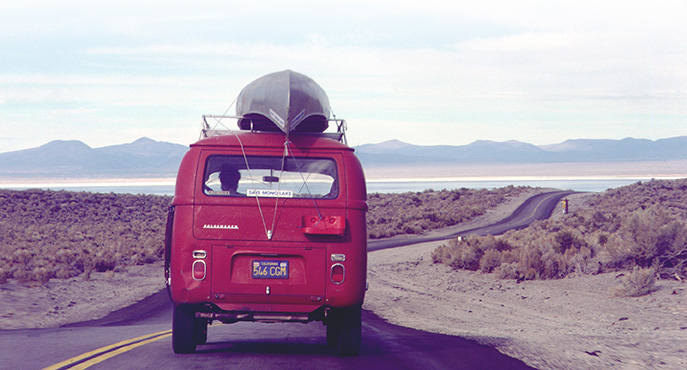
Half a lifetime for a person, 40 years is negligible for a 760,000-year-old lake. As an old timer (or the “OG”—Original Gangster—as I was recently called by a young staff member), here’s my brief summary of the first four decades of the Mono Lake Committee—our story, as I will someday tell my grandkids.
In the 1970s, only a handful of sightseers, residents, and birdwatchers understood that Mono Lake was declining fast due to excessive creek diversions. In 1976, a dozen undergraduates inventoried the basin to describe a simple but very productive ecosystem that would be lost if it dried up, which it was on track to do.

So our group of shaggy biologists organized a non-profit to use legal, legislative, and educational means specifically to help Mono Lake. Love of the lake overcame our hesitation of things unfamiliar. Why else would we be on the 40th floor of a San Francisco law office building trying to understand the finer points of 501(c)(3) versus 501(c)(4) non-profits in our best no-holes jeans?
Our pro bono lawyer predicted the lawsuit based on the Public Trust doctrine would take two to three years. Ha! Once I left working at the mail and membership desk to raise my kids I lost track of every twist and turn of the convoluted legal issues, but I do know we won every round.
We also had to brave the halls of Sacramento and Washington, DC to get state and national protection. Over the years the staff have gained knowledge and sophistication in politics, legal matters, and new technology as these things change every year.
Publicity was all important to our cause. We sent out press releases and showed hundreds of reporters and photographers around the lake. We knew our members needed to be informed with the science behind our positions, so we educated anyone we could reach using the Mono Lake Newsletter, slide shows, books, and best of all, field trips. We are still amazed and eternally grateful for the widespread grassroots support that made us successful on all fronts. Mono Lake is now world famous and heavily visited.
We were able to rent, then buy, the storefront on Highway 395 so we could more easily help people learn about Mono Lake, sell Mono Lake-y items, show the slide show, and keep our staff—huddled around a woodstove in the winter—working together. Although the building has been remodeled several times, space is always cramped. I still don’t understand how so much great work gets done by everyone in that “rustic” office.
In the early days we used manual typewriters, rub-off letters, mail-in Kodak film processing, and black rotary-dial phones, while working on plywood-topped desks we constructed ourselves. Actually, the expanded staff still uses those desks, but just about everything else they use in the office has changed radically, except maybe the fax machine.
The outdoor activities like canoe tours and field trips continue about the same pace; the landscape putters along on a slower timeframe. People still enjoy getting out of their vehicles to walk to long solitary beaches, meadows, creeks, and mountains—marveling at the wide open landscape under a blue sky. The lake endures. As our first bumper stickers read, and as they still do 40 years later, Long Live Mono Lake.
This post was also published as an article in the Winter & Spring 2018 Mono Lake Newsletter (pages 3 and 17).

[…] View Original Article […]